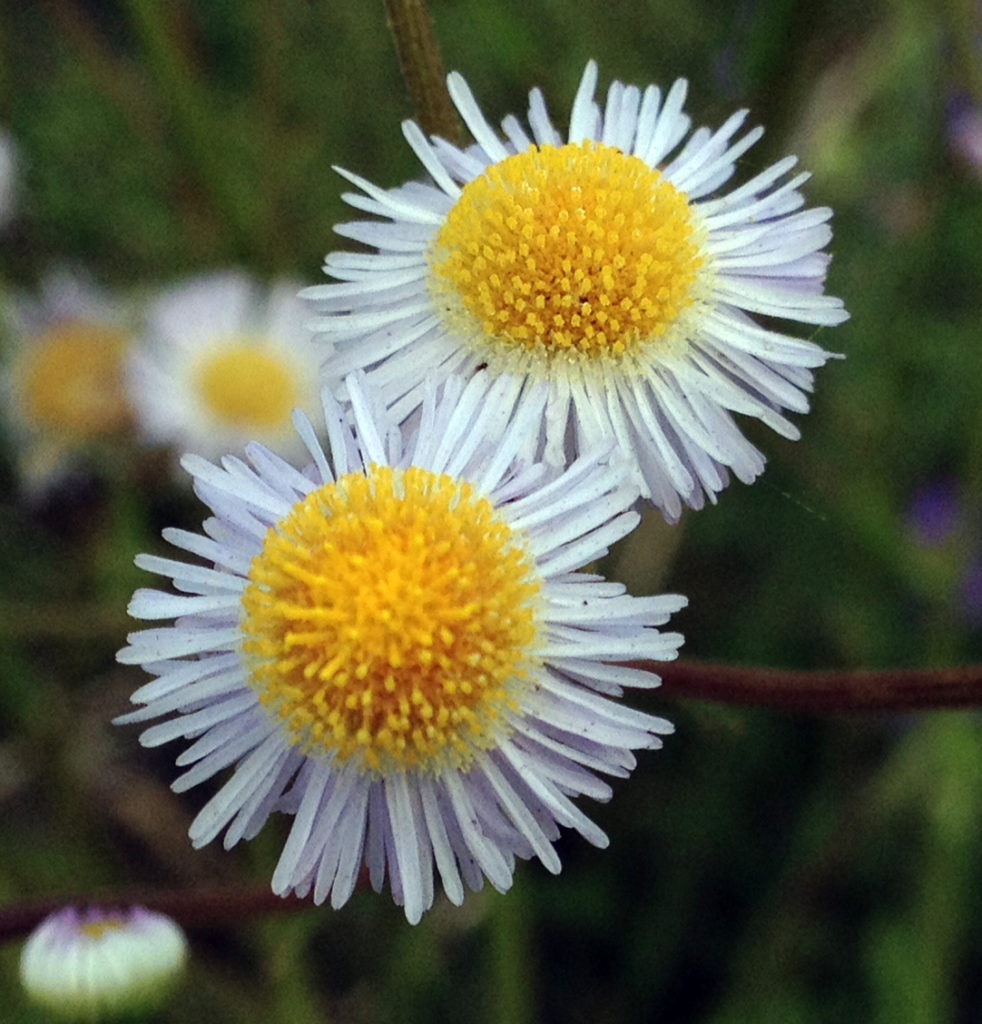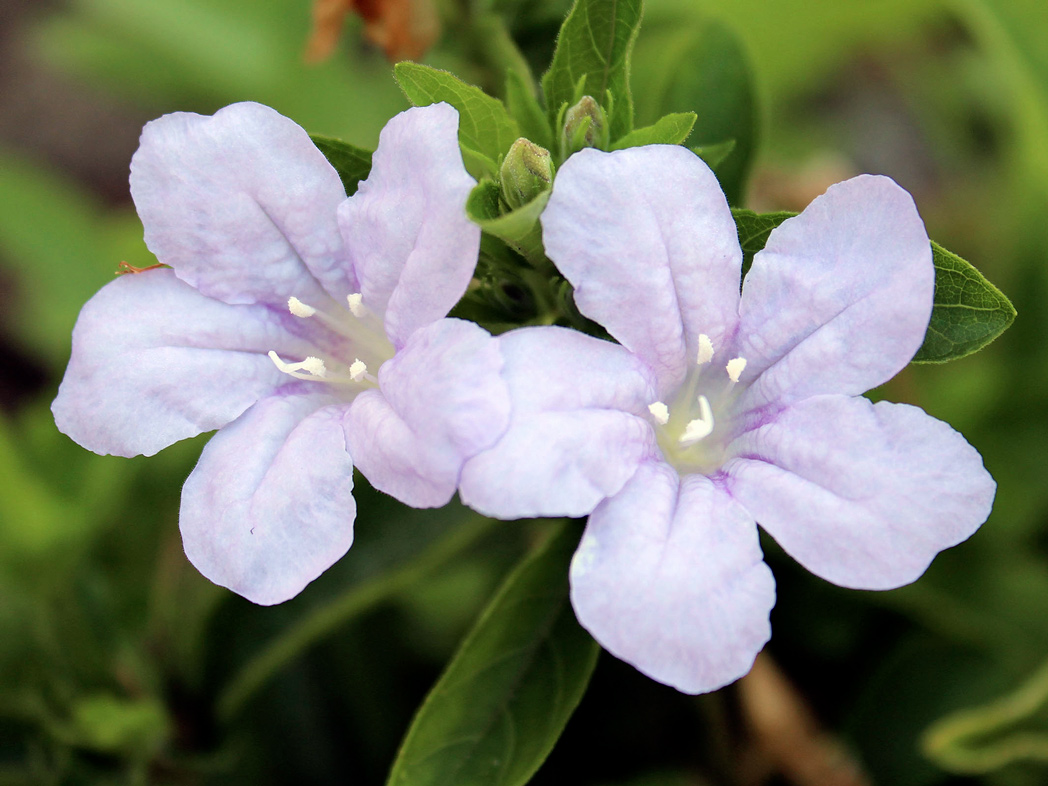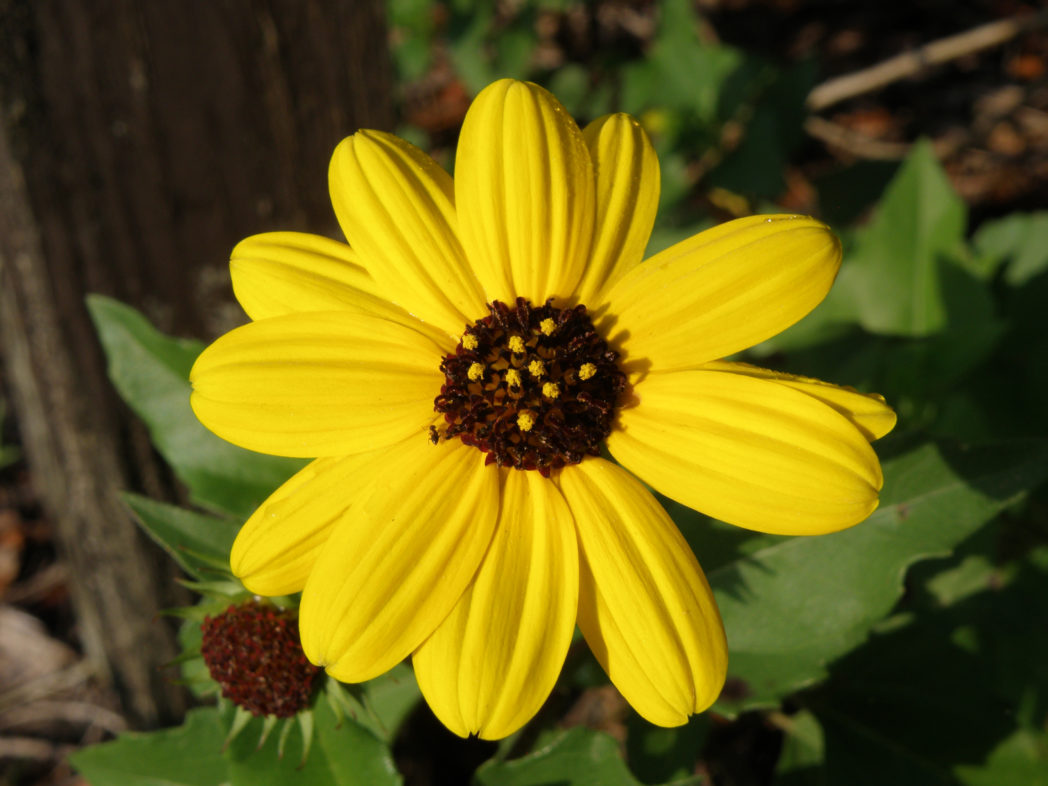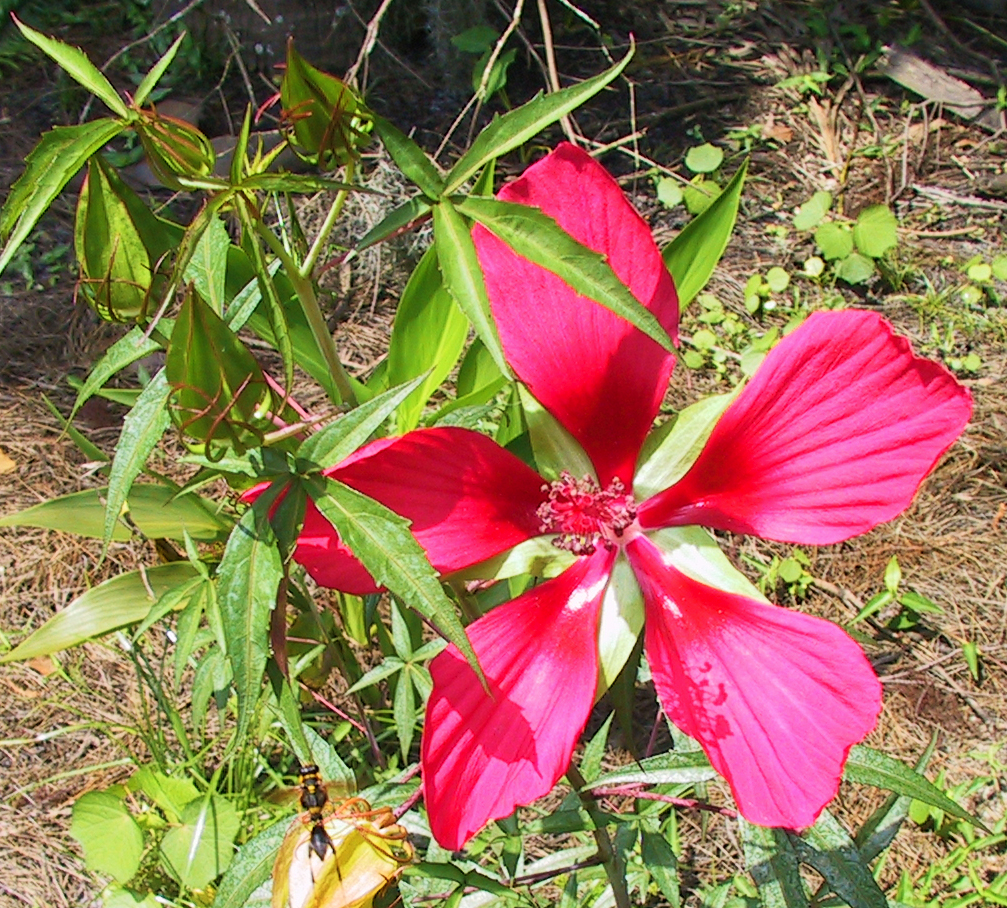Cool native wildflowers for summer garden blooms
by Claudia Larsen
If you’re looking to dress up your landscape this summer, consider these native species, which adapt readily to home gardens and provide weeks of blooms.
Fleabane (Erigeron spp.) (pictured, right) flowers throughout the season with dozens of tiny white petals that create an airy daisy bouquet. This annual grows where it pleases and not always where you want it, but its delicate form is complimentary to most plantings. Dried plants have been used in bedding to repel fleas and other pests.
Yellowtops (Flaveria linearis) (pictured, right) is a great plant anywhere in Florida, although its natural range is coastal. Cheerful bright-yellow flower heads top this perennial, which grows 30 inches or more and flowers most of late summer. Light-green succulent leaves create a fresh look even in dry times. It is easy to start from seed and should regenerate in your garden year after year.
Soft-hair coneflower (Rudbeckia mollis) makes a strong presence with gray-green leaves with soft hairs and a sturdy stem that supports multiple yellow flowers. It is very statuesque and makes an impact when grouped together. There are at least nine members of this coneflower family in Florida, and they grow in diverse habitats including swamps, pine flatwoods, hammocks and sandhills.
Wild petunia (Ruellia caroliniana) (pictured, right) will make itself at home in just about any garden situation, where its light blue flowers create a cooling effect. Its exploding seed capsules may spread over a wide area, but it is a good filler plant and grows where other things won’t. It is single-stemmed in shade but happier in sun, where it forms a compact 12- to 15-inch plant that blooms continuously this time of year.
Woodland poppymallow (Callirhoe papaver) is seldom found in the nursery trade, but the low-growing plant is a showstopper with 2-inch bright pink poppy-shaped flowers. Each mature 8- to 12-inch rosette will have more than 30 blooms that you’ll enjoy for weeks. It is a plant that must be in the “right place” to be happy. While its natural habitat is an upland mixed forest, Woodland poppymallow can be grown in home landscapes in light shade.
Frogfruit (Phyla nodiflora) continues to amaze me as the busiest plant in the garden since it is always covered with small insects and butterflies that visit its tiny matchhead flowers. This plant is a fast mat-like spreader and is a good candidate for naturalizing in a sparse lawn, septic mound or retention ditch. I like it best in a hanging basket or trailing out of a large display patio container. It may go dormant in drought but revives after rain. Frogfruit is a larval host plant for the white peacock butterfly.
Leavenworth’s tickseed (Coreopsis leavenworthii) is always a part of the summer garden, although it does not do well in prolonged drought. Try using it in light shade, and remember it will re-seed bountifully on bare ground or in nearby potted plants.
Dune sunflower (Helianthus debilis) is happy to fill the job as a hardworking groundcover when planted in well-drained soil in full sun to light shade. It produces tons of flowers with little upkeep besides an annual trimming in fall.
Bluecurls (Trichostema dichotomum), a member of the mint family, is becoming a well-known annual that returns by seed in well-drained sunny gardens. It emerges after spring has passed to form a 30-inch-tall well-branched plant. Look closely to admire its spotted lower lip petal beneath a blue-lobed corolla with four amazing long-curled stamens. It’s a great drought-tolerant plant for the whole state.
Most wildflower vines take advantage of summer heat and rains to increase growth and initiate flowering. Vining leaf tendrils will rapidly cover fences and trellises, forming a cascade of leaves and flowers.
Coral honeysuckle (Lonicera sempervirens) vines produce red tubular flowers during the summer, which are frequently visited by hummingbirds. These plants can grow in shade but bloom best with at least a half day of sun.
There are several Florida Clematis species that can be seen growing over shrubs and trees in shady sites. These adapt well to gardens and delight us with intriguing upside-down bell-shaped flowers followed by seed heads with feathery attachments. They are often referred to as leather flower or leather leaf.
Many vines often sprawl along the ground in native habitats. Some, such as Purple passionvine (Passiflora incarnata), can take over in the home garden so plan to prune. This plant is a larval host for the common gulf fritillary butterfly. During summer, you’ll see ominous orange caterpillars with harmless black hair-like spines.
Beautiful flowering vines that contribute to dune stability on our beaches include members of the morning-glory family, such as Railroad vine (Ipomoea pes-caprae) and Beach morning glory (Ipomoea imperati). Both have stout stems and succulent foliage to keep them hydrated and aid in salt resistance. Look for smaller, more delicate flowering vines in the pea-family when visiting natural areas.
Shady areas can also support wildflowers as long as shade is not too deep and the soil too dry. High shade from pines and shifting shade during the day create niches for wild plants.
Elephantsfoot (Elephantopus elatus) forms a ground-hugging plant with strap-like leaves. It survives drought and even light mowing to form large patches under trees. It blooms in late summer.
Some plants flower in response to rainfall. Keep an eye on Scarlet rosemallow (Hibiscus coccineus) for an eye-popping display of large red solitary flowers and hemp-shaped leaves. Like other Hibiscus species, this plant grows 4 to 6 feet tall and needs a moderately moist site to thrive.
Firebush (Hamelia patens) is always a star in the shade garden, growing 4 feet high and wide and luring butterflies and hummingbirds to feed from its numerous red-orange tubular flowers. It’s a good bet for a dry site. It is best grown in areas with minimal winter frost — but who thinks about frost during the Florida summer!
Visit www.FlaWildflowers.org/learn-to-grow for links to Florida native plant and seed sources and find more summer gardening tips on our blog.




